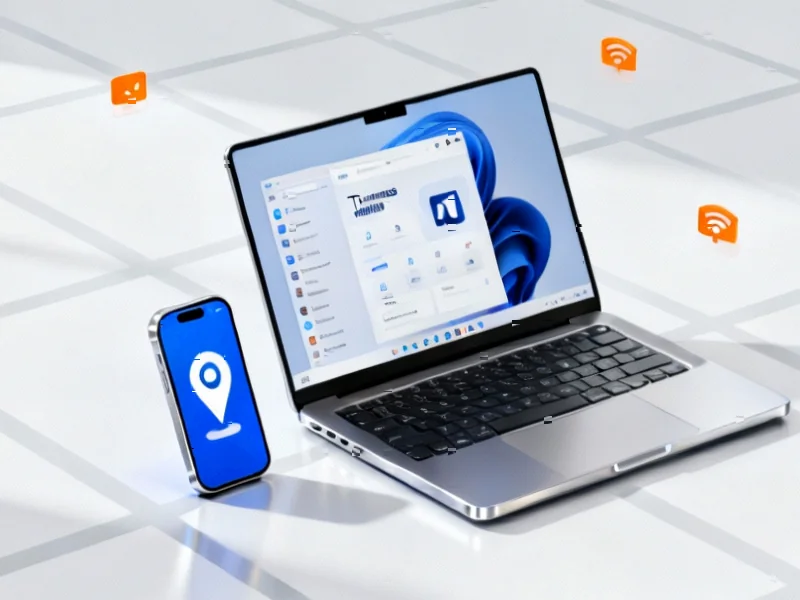Microsoft’s Workplace Monitoring Expansion
Microsoft is rolling out a significant update to Teams that will automatically detect and share employees’ physical locations when connected to company WiFi networks. The feature, scheduled for deployment starting December, represents a major shift in workplace monitoring capabilities that’s generating considerable discussion among privacy advocates and workplace experts.
Table of Contents
According to Microsoft’s 365 Roadmap documentation, the system will “automatically set users’ work location to reflect the building they’re working in” when they connect to organizational WiFi. This means that even if employees maintain virtual backgrounds during video calls, their actual physical presence—or absence—from designated workplace locations will be visible to colleagues and management.
How the Location Tracking Works
The technology leverages existing WiFi connectivity data that many organizations already collect. When employees connect to company WiFi networks, Teams will automatically update their presence status to indicate their specific building location. Microsoft explains that the system also activates “when you connect to peripherals in bring your own device (BYOD) rooms or at bookable desks,” creating a comprehensive picture of employee movements throughout physical workspaces.
This represents a significant departure from current practices where employees manually set their location status or rely on less precise location indicators. The automated nature of the tracking means employees may have their locations updated without active consent or even awareness during normal work activities., according to related coverage
Potential Workplace Implications
The implementation raises important questions about workplace culture and employee autonomy. As TechRadar highlighted, employees seeking focused work time in office environments might find their privacy expectations challenged by constant location visibility., according to technology insights
Workplace experts identify several potential concerns:
- Reduced flexibility for employees who occasionally work from different locations within company facilities
- Increased pressure to be visibly present in expected locations rather than focusing on work output
- Potential for misinterpretation when location data doesn’t reflect actual work activities
- Blurring of boundaries between necessary coordination and excessive monitoring
Privacy and Ethical Considerations
Location data represents some of the most sensitive information employers can collect about their workforce. While Microsoft positions the feature as enhancing collaboration by helping colleagues “know where team members are working from,” privacy advocates question whether the benefits outweigh the potential for workplace surveillance overreach.
The implementation arrives amid growing discussions about workplace monitoring ethics. Many organizations are still developing policies that balance operational needs with employee privacy expectations. This feature could force more companies to explicitly define their stance on location tracking and transparently communicate these practices to employees.
Implementation and Availability
Microsoft confirms the feature will roll out globally to Teams users on both Windows and Mac platforms beginning in December. Organizations will need to determine whether to enable the functionality and how to communicate its use to employees.
The deployment highlights the ongoing evolution of hybrid work tools and the complex balance between enabling collaboration and respecting employee privacy. As workplace technology continues to advance, features like automated location tracking will likely remain at the center of important conversations about the future of work environments., as related article
Companies implementing such features would benefit from developing clear usage policies, providing employee education about how data is used, and establishing guidelines for appropriate use of location information by managers and team members.
Related Articles You May Find Interesting
- UnifyApps Secures $50 Million to Solve Enterprise GenAI Integration Challenges
- China’s Tech Ambitions Take Center Stage at Leadership Summit Amid Global Tensio
- The AI Escrow Revolution: How Propy’s Agent Avery is Automating Real Estate’s Fi
- Tech Leaders and Celebrities Unite in Call for Superintelligence Moratorium
- Zotac’s Magnus EN275060TC Redefines Portable Gaming with Desktop-Class Performan
This article aggregates information from publicly available sources. All trademarks and copyrights belong to their respective owners.
Note: Featured image is for illustrative purposes only and does not represent any specific product, service, or entity mentioned in this article.



